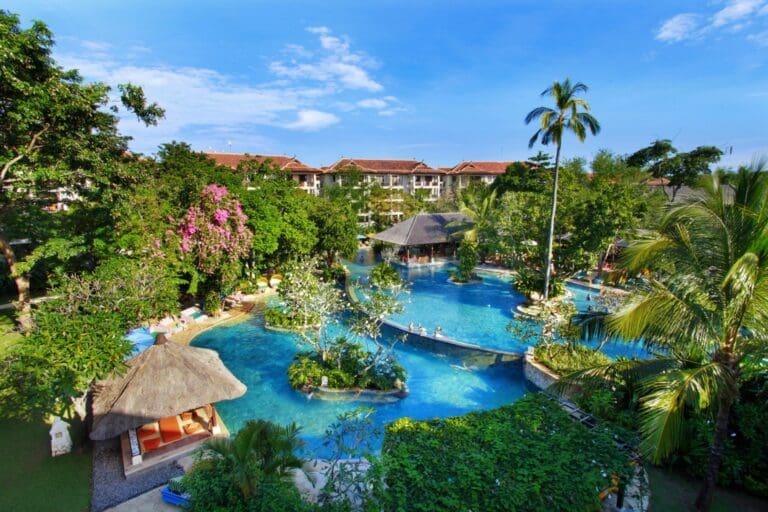 Everyone knows “cash is king” when it comes to operating a business, but in a disrupted market, with historically low levels of demand, for many hoteliers this statement has taken on extra significance.
Everyone knows “cash is king” when it comes to operating a business, but in a disrupted market, with historically low levels of demand, for many hoteliers this statement has taken on extra significance.
Long recognised as a vital means of boosting a hotel’s bottom line, revenue management is now playing a central role in protecting, forecasting, and strengthening a hotel’s cash flow and overall financial position by driving the top-line and ultimately the cash position of the asset.
Increase the cash held within your business and benefit
The additional revenue generated by the proper use of a sophisticated, strategic revenue management system (RMS) directly flows into the amount of cash available. This higher rate of cash flow, combined with detailed forecasts which enable expense management, has a number of benefits critical to operating through the COVID-19 era of low occupancy and business disruptions. From giving the hotel greater day-to-day liquidity to enable meeting of operating costs, to having money in the bank generating interest and leveraging return on capital, the increased RMS derived revenue and expected business performance insights should not be overlooked.
Consider cash flow and hotel portfolio performance
Setting and centralising revenue management standards across a hotel group also improves overall portfolio performance. Data collection and comparisons between properties by brand or by region allow hoteliers to determine how to best price their properties within different markets. Accurate forecasting data, market research and analysis also allow hoteliers to execute realistic feasibility studies for all future opportunities. Estimating future project successes before outlaying capital investment will help any hotel group in the fortunate position to be considering acquisitions to make decisions likely to increase the group’s long-term cash flow and value.
Target the right business to generate cash flow
Not all business is worth the same value and a full hotel is not necessarily a profitable hotel. Hotels can all too easily fall into the habit of selling out rooms to lower-rated business through a “first come, first served” approach. While securing any paying guests might be attractive for hoteliers desperate to attract business in a soft market, this often results in a mix of business that limits ongoing revenue, reduces ancillary spend and thus drives down profit opportunities for a hotel. Revenue management can support the ongoing financial stability of a hotel, even when faced with disrupted market conditions.
To help identify the right business mix for a property, hoteliers should utilise an accurate unconstrained demand forecast. The right business may just end up being the highest paying, but it also might include additional considerations like length of stay, long-term loyalty, ancillary spend and likelihood to return. To assess who may be your most valuable guest, incorporating data from all transaction systems will provide a holistic picture of guest behavior and their overall value, inclusive of ancillary spending.
By understanding where customers are likely to spend their money, hoteliers can make informed and data-driven decisions about which guests should receive a last available room or be offered discounted restaurant or spa promotions that will help drive demand. When hotels begin to effectively target their most valuable customers, the additional revenues generated will translate into greater cash flow for the business.
Consider cash flow when renovating
There is never an easy time to renovate a hotel. Refreshing a hotel is costly and can result in a whole or partial closure of the business. However, major hotel building works should be undertaken when a property needs to be upgraded in order to maintain its revenues and defend its fair market share.
For hotels evaluating major upgrades through this period of lower demand, two approaches must be considered: whether to partially shutdown the property, staggering building works and trade-through, or to undertake a full closure. A hotel’s online reputation will be impacted both during renovations (think complaints from guests about noise or availability of rooms) and post renovations (guests may or may not like the new rooms or could potentially stage a reputation revolt if they get an unrenovated room). It is vital, therefore, that pricing should reflect how guests currently perceive their property, how this compares to their competitor set, how a partial shutdown (and subsequent building works) will impact a guest’s stay and what is the desired reputation for the hotel after the property is reopened.
The answer to which approach is best for a property relates to whether your hotel needs to maintain a short-term cash flow, in which case a partial or staggered renovation is probably the best choice. However, if a hotel owner’s focus is long-term revenue or reopening to reposition the hotel at a different service or star level, a full shutdown may be the better approach.
There are downsides with both full and partial shutdown approaches. A partial shut-down can lessen brand prestige as guests have to stay at incomplete properties, while a full shutdown kills revenue and can result in high-performing staff leaving for competitors. To assess which strategy is best employed for a hotel’s renovation, property owners should run A/B testing to understand displacement of a renovation and help accurately weigh the cost to the business.
Control costs to free cash within the business
A key challenge when operating in historically low market conditions is finding the balance between maximising the guest experience while keeping labour and operational costs low to ensure cash is kept within the business. No hotelier wishes to have staff sitting around underutilised as a result of not having enough work to do. Accurate demand forecasting provided by an RMS formsthe foundation of optimal labour scheduling and other operational planning.
For example, a demand forecast can indicate the number of occupants expected by room type which will underscore the correct calculation of required housekeeping services, the number of staff needed on the front desk to check guests in and out, the number of servers required in restaurants and valets to park cars. Another factor to consider is food and beverage, a large source of potential wastage for hotels, especially when it comes to those items that come with an expiration date. Knowing when there will be periods of higher and lower demand, as well as which segments guests will be from, will help hotels schedule both labor and perishable goods at the right time and subsequently avoid costly spoilage.
Every dollar counts
Every dollar a hotel earns today generates cash flow to help keep the lights on and every dollar saved strengthens the bottom line. With demand for rooms, food and beverage, and meetings and events at all-time lows, hotels must redefine target markets and find new sources of revenue. By optimising all revenue streams, hotel operators can find incremental revenue and savings in untapped areas. By factoring total revenue and costs into decisions, they can reduce losses and increase profitability. As demand returns, the returns on these strategies will gain momentum, generating additional cash flow for the business and helping to expedite recovery.


















